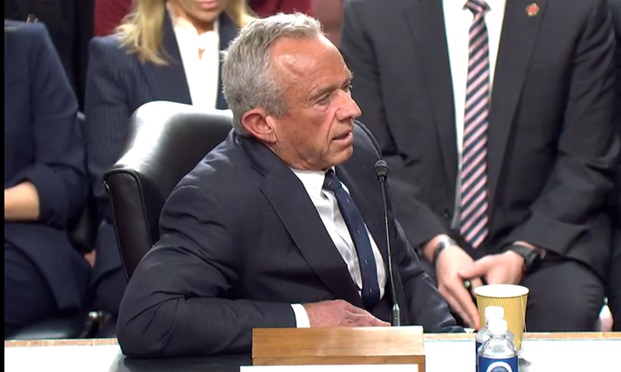I've written recently about the lack of consumerism among patients, and the health industry's strong resistance to furnishing even a moderate amount of transparency that could boost consumer's shopping effectiveness. This article, however, speaks to a cultural shift that could provide tremendous employer impact.
Most employers I work with want to provide their employees access to the "best" health care possible. And for ethical and regulatory reasons (think HIPAA), many executives steer clear of involvement in health care decisions, other than selecting the broadest network access possible. But from a financial perspective, few expenses impact the P&L that executives know so little about as much as health care. Managers are more likely to limit rental cars to $30 per day than limit an open heart surgery to $100,000. And remember, under the coverage provisions of the Patient Protection and Affordable Care Act (PPACA), both fully-insured and self-insured are required to provide an unlimited benefit. The open credit card analogy really applies.
The responsibility business owners feel to their employees' health care spending has shifted, empowering both cost-lowering and outcomes enhancement opportunities. Until now, employers' limited involvement has used two main strategies. They first offloaded costs to employees, hoping that more skin in the game would change behavior (and increase payroll deductions, out-of-pocket spending, or both). They also invested in wellness programs.
Recommended For You
Neither approach had the desired results. Patients' inability to challenge the lack of transparency, combined with health care costs that rose faster than employers shifted them, resulted in insurance picking up more cost, and driving down consumerism.
Wellness programs also have two main failings. They are most attractive to the already well, and attempt to reduce how often enrollees encounter the system. But we know that everyone will encounter care at some point. It is each encounter's volume and cost of care that is at the heart of our out-of-control system.
I recently participated in a whirlwind two-part 48-hour trip with some incredible health care leaders. First we met with the executives of Rosen Hotels in Orlando, who have saved hundreds of millions of dollars compared to average employer health care costs. Rosen's single digit employee turnover would delight most employers, but it is spectacular in the hospitality industry. They achieve this with a benefit-rich plan that most employees would drool over: e.g., no-cost prescriptions, $750 max hospital out-of-pocket.
How do they accomplish this? First, their health care thinking is based on what they want to achieve rather than what they have to provide. Beginning with the CEO, Rosen's top executives really care about every one of their employees, evidenced by the fact that more than a few have been there for 40+ years. (Remember that this is a hotel chain, not a hedge fund with six-digit salaries). The strategies deployed do vary, but they mainly support making the highest value care as accessible as possible.
Value — a fair return or equivalent in goods, services, or money for something exchanged — is seriously lacking in American health care. Rosen took it upon himself to provide it whenever and wherever possible, using their clout to lower costs. They arranged special prescription drug discounts with Walmart. They have on-site medical directors that personally engage with each employee's health. They visit them in the hospital, help them arrange home delivery of costly specialty medications from lower cost pharmacies. They monitor and support sick employees' recovery and progress. They also built a health and wellness center for all employees and dependents, with primary care, prescriptions, fitness instruction and more. I know all this sounds expensive, but the impact far outweighs the cost.
The second part of our adventure involved a flight to the Caribbean island of Grand Cayman, just south of Cuba, a beautiful tropical setting an hour flight from Miami (and with direct flights from a dozen other U.S. cities). The morning after our late arrive, we enjoyed the beautiful sunrise for exactly 20 seconds, then were bussed to a facility called Health City Cayman Islands (HCCI). The single building on 200 acres (with significant future expansion plans) is clean, new and functional, though not nearly as grand as many U.S. mega-hospitals. Now two years old, HCCI is a joint venture between Ascension Health (a non-profit U.S. health system) and Narayana Health, a top Indian health system, based in Bangalore. HCCI's Indian roots are very important, because that country has no national health care or insurance system. The Indians have a novel approach to health care—you pay for it.
Narayana Health, which has achieved Joint Commission International (JCI) accreditation, performs a volume of procedures unprecedented in most hospitals. This volume is produced by a highly experienced team with quality outcomes that equal or exceed the best U.S. hospitals, but at far lower cost. Dr. Devi Shetty, Narayana's founder and a cardiologist who has performed more than 25,000 heart surgeries, is focused on reducing the price of an open heart surgery to U.S. $800. (It currently sits around $1,400.) Compare that to a 2008 Millman report that pegs US open heart costs at around $324,000.
Some employers — Carnival Cruise Lines, for examples — are so convinced HCCI's of value — better health outcomes at far lower cost — that they pay all travel, including a family member's accommodations for the length of stay, and often waive an employee's out-of-pocket costs associated with the procedure.
While HCCI's pricing is higher than at its Indian sister facility, many people could afford to pay for HCCI's care with their credit card, if that were necessary.
HCCI charges a single, bundled fee that covers all associated costs, plus the cost of most complications. As its director responded when I asked, "Why should the patient pay for something if it were our mistake?" Compare that to U.S. facilities, which are financially incentivized to deliver as much care for as long as possible, and which get paid more if they make mistakes. HCCI's upfront pricing model creates a serious positive incentive for efficiency and quality, because the facility is financially responsible for complications, infections and extra tests.
Patients and purchasers (i.e., employers and unions) should realize that nearly all U.S. health care — hospitals, doctors, drug companies and even insurance carriers — is structured to benefit from the idea of more, rather than those of good, efficient or innovative. Why insurance carriers? Well, prior to PPACA, a carrier's profit was the difference between premiums collected and insureds' medical claims and administrative costs. But another PPACA provision, focused on Medical Loss Ratios, gives insureds a refund if carriers effectively lower medicals costs, setting up a perverse incentive for higher medical costs.
This means that purchasers and patients must use any available levers to get the best health care value they can. As Rosen and HCCI have proven, those levers are increasingly available.
© Touchpoint Markets, All Rights Reserved. Request academic re-use from www.copyright.com. All other uses, submit a request to [email protected]. For more inforrmation visit Asset & Logo Licensing.






